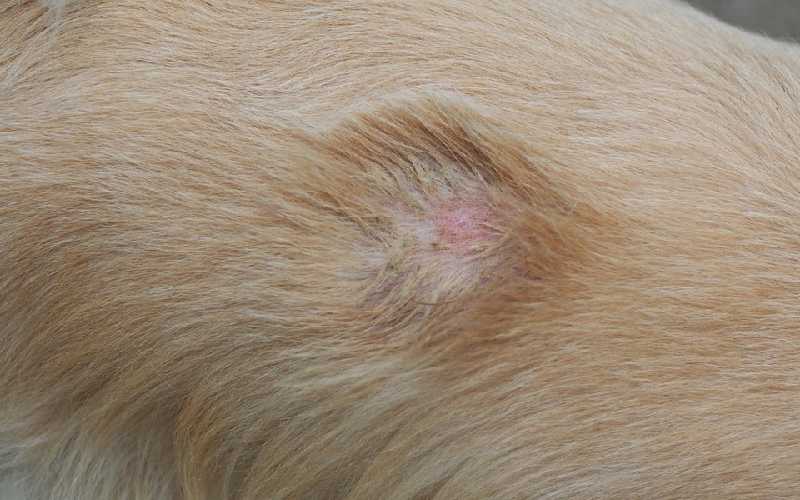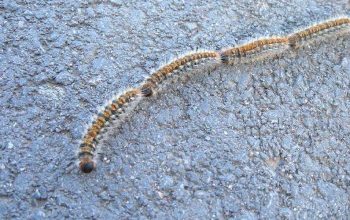ratonerobodeguero.com is a participant in the Amazon Services LLC Associates Program and other affiliate advertising programs designed to provide a means for us to earn fees by linking to Amazon.co.uk and affiliated sites. Affiliate links may be used on this page and in ratonerobodeguero.com articles, but they do not impact on the price that you pay and they do help me to get this information to you for free. Read my privacy policy for more information regarding affiliates.
Ringworm is just another infection that us dog owners have heard and fear, despite having ‘worm’ in its name, it is not actually a type of worm. It is a fungal infection that is common amongst animals all over the world, therefore it is important for owners to know the symptoms, causes, and what kind of treatment is available. First of all, what is ringworm?
Ringworm is a fungus that infects most animal species, including humans. It actually gets its name because of the bloated red ring that appears when a human is infected by it. The fungus grows within the top layer of skin and can also live in the hair follicles and even the nails of dogs if they are infected. Most of the time ringworm only affects certain areas of a dog’s body, but there are some cases where dogs may be more vulnerable to it. Including, puppies, older dogs, and those with underlying health conditions. Ringworm feeds on keratin, hence why it is often found around and hair follicles and sometimes nails.
How do dogs catch the ringworm infection?
Ringworm is spread by your coming into direct contact with the fungus, most commonly the fungus microsporum canis, but also occasionally microsporum gypseum, or trichophyton mentagrophytes. This direct contact can be if your dog comes into contact with an infected dog, human, or other animal, or even if they touch something that an infected animal has touched before such as a bed. The fungus can last on surfaces for up to 18 months and this is why it spreads fairly easily.
So, what are the symptoms?
Ringworm is mostly nothing to worry about, but it is highly contagious and will require veterinary attention as soon as you notice the symptoms. Being able to spot the symptoms will allow you to prevent further spread of the infection.
Symptoms:
Hair loss
Sometimes in dogs, ringworm causes bald circular patches that may become scabbed or inflamed over time. Although most would think so, ringworm does not itch.
Dry and brittle hair
The hair follicles will likely become dry and brittle, this is why the fungus spreads so easily, because the dry and brittle hair falls easily and can therefore come into contact with more animals and surfaces.
Rough and brittle claws
Although more rare, rough and brittle claws are sometimes a symptom of ringworm.
Ringworm treatment in dogs
First of all, your vet will need to diagnose your dog with ringworm through a physical exam and a diagnostics test. This may include taking a sample of hair or skin cells in order to pinpoint if it is ringworm and what type of fungus caused it.
Once your dog has been diagnosed with ringworm, your vet will give you a treatment plan. This varies of course depending on the severity of the infection, the type of fungus, and whether there are any other animals in your household etc. If there are other animals in your household, your vet may advise you getting them checked and tested for ringworm as well. However, normally treatment includes:
Topical therapy
Topical therapy includes ointments, creams, shampoos that can be used to treat the infected areas. Sometimes if your dog has long hair, the vet may recommend that you clip their hair in order to speed the treatment process up. This type of therapy does take a while to eliminate the infection (a few months), but it does help with decontaminating the dog’s environment too.
Medication
Oral medications are normally used alongside topical therapy. The types of medication used are anti-fungal and help to fight off the infection. Oral medications do however need to be administered for a period of over six weeks (at least, some cases it could be months) in order to take effect, but this is most likely the case for topical therapy too.
The decontamination of your dog’s environment
Because of the infection’s ability to remain on surfaces for up to 18 months, it is incredibly important to decontaminate anything your dog has come into contact with. This stage requires you to remove all loose dog hairs from your home, of course it is a pain and tricky, but it will be worth it. While your dog has ringworm it may even be a good idea to keep them in a room where it is easy to clean so that you can decontaminate the area more easily and quickly as this will need to be done daily.
At the end of all this, your vet will likely test your dog again to give them the all clear.
Preventing ringworm
You don’t really need to think about preventing ringworm unless you know that you or your dog has come into contact with someone or another animal who has ringworm. In this case, if the contact was within your home, make sure that you clean everywhere and keep your dog away from the animal or person who is contaminated. The incubation period between exposure and symptoms developing is around seven to twenty one days. However, the most important thing is to learn the symptoms of ringworm so that you can catch it early.
If you enjoyed this article you might also like to read about:



3 thoughts on “Ringworm in Dogs”